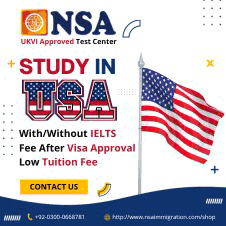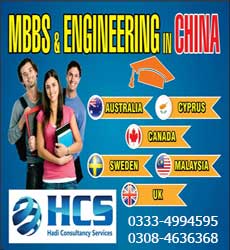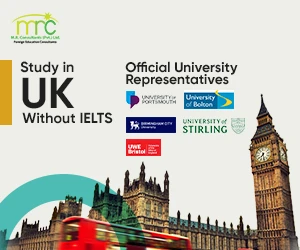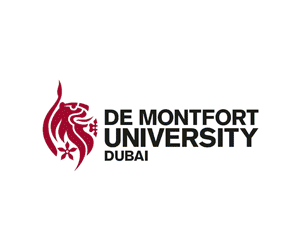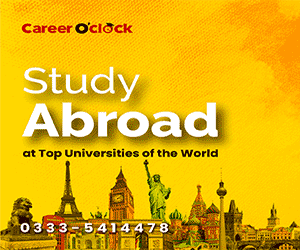An overview of the opportunities available next year
The Canadian Government is expecting to welcome between 240,000 and 265,000 new permanent residents in 2014, a similar number to the... target immigration levels in previous years.
Although the total number has been pretty much static, a lot has changed in the overall immigration policy this year, including new and re-opened immigration streams, altered conditions and shift in focus on required professions.
Resource Management has compiled an overview for aspirant immigrants to Canada, revealing where the best opportunities lie.
Provincial programmes
Canada's immigration system is gradually moving towards a decentralised system, say experts. In practise, this means that the emphasis is more on the provinces to select the immigrant that would contribute most in that particular region.
For the immigrant, this means more realistic job opportunities, and a migration much better prepared. Almost all provinces offer Provincial Nominee Programs (PNP), accepting applicants based on the labour demand in that province.
These applicants are offered permanent residency on the federal level once they have arrived.
For skilled workers, the best opportunities currently lie in the western provinces. In Saskatchewan, Manitoba, and Alberta an economic upswing has made for a continuous demand of labour, which is in many cases sought abroad.
For instance, the Alberta Immigrant Nominee Program (AINP) has dedicated streams for food service workers, graduates of Canadian educational institutions, engineers, tradespersons, and even self-employed farmers.
The Saskatchewan Immigrant Nominee Program (SINP), on the other hand, has streams for long-haul truck drivers, family members of Saskatchewan residents, farm owners and operators, health professionals, and hospitality workers.
Entrepreneurs are welcomed by certain provinces too. Taking British Colombia (BC) as an example, experienced business entrepreneurs who plan to invest in and actively manage an eligible business in BC are welcome to apply through the PNP.
The requirements and availability differs from province to province and is subject to change. The following provinces are currently offering PNP programmes for skilled workers: Alberta, British Colombia, Manitoba, New Brunswick, Newfoundland and Labrador, Nova Scotia, Ontario, Prince Edward Island, Saskatchewan, and Yukon. Semi-skilled workers should look at programmes in the provinces Alberta, British Colombia, Saskatchewan, and Yukon.
On the federal level
While the beginning of 2013 witnessed the addition of a new immigration programme -the Federal Skilled Trades Programme- the beginning of 2014 will interlude the re-opening of another popular programme -The Family Sponsorship Programme.
The most popular federal immigration programme -the Federal Skilled Workers Programme- will continue to accept applications until May 2014, and the government anticipates record levels of admissions from the Canadian Experience Class.
The Federal Skilled Worker Programme
The Federal Skilled Workers Programme is considered the most popular programme, because it selects qualified skilled applicants from across the world based on factors like their education, work experience, language proficiency, etc. No job offer or Canada-based sponsorship is required.
The programme was revised and re-opened in May 2013, after it had been closed for admissions for nearly a year. The new programme gives more weight to proficiency in one of the two Canada's official languages (English or French), and prefers younger applicants, while giving lower weight to work experience outside of Canada.
Currently, there are 24 job categories on the occupation list, with a high representation of health and engineering professions. As the intake per category is limited to 300 applications, 7 categories have been closed at this point. Last week, an estimated 3014 applications had been received for the programme so far.
The available occupation categories are as follows:
- Geoscientists and oceanographers (42 applied)
- Chemical engineers (134 applied)
- Mining engineers (7 applied)
- Petroleum engineers (4 applied)
- Geological engineers (69 applied)
- Aerospace engineers (16 applied)
- Land surveyors (14 applied)
- Industrial instrument technicians and mechanics (63) applied
- Inspectors in public and environmental health and occupational health and safety (166 applied)
- Audiologists and speech-language pathologists (12 applied)
- Occupational Therapists (35 applied)
- Medical laboratory technologists (201 applied)
- Medical laboratory technicians and pathologists' assistants (71 applied)
- Respiratory therapists, clinical perfusionists and cardiopulmonary technologists (18 applied)
- Medical Radiation Technologists (44 applied)
- Medical Sonographers (32 applied)
- Cardiology technologists and electrophysiological diagnostic technologists (23 applied)
Also considered as federal skilled workers are PhD graduates. However, applicants under the PhD stream are subjected to a separate intake cap, being 1000 for the same period. PhD candidates must have finished at least two years of study in Canada towards a PhD, or have graduated from a Canadian PhD program in the 12 months before submitting the application.
Family sponsorship programme
The year 2014 is looking good for those who want to migrate to Canada on the sponsorship of a family member, with an expected 68,000 new residents under one of the Family Sponsorship Programme (FSP). Three streams under this programme look promising.
The Parent and Grandparent Programme (PGP) will re-open on January 2 2014 after being closed for two years. The Government has promised to accept 20,000 newcomers through the programme.
Noteworthy is that an application cap of 5000 applies for the 2014 intake period, and the remaining residencies will be drawn from the backlog of applications. However, faster processing times and shorter waiting periods have been promised.
Sponsoring a spouse or child will continue to be possible and unrestricted by an intake cap. The Government expects to welcome 48,000 new residents as spouse, partner, or child.
Two new rules have come into effect this year; an individual who has been sponsored as a spouse is banned from sponsoring another spouse in turn for 5 years after receiving Canadian Permanent Residency; and spouses or partners who have been in a relationship for two years of less, and who have no children together, will receive conditional permanent residency.
They must prove that they continue to live with their spouse or partner in Canada, in a legitimate relationship, for two years before full permanent residency is received.
In the absence of the PGP, the alternative Parent and Grandparent Supervisa was introduced. The Government announced that this opportunity will remain to exist in 2014 next to the new PGP.
The Super Visa provides parents and grandparents of Canadian citizens and permanent residents with a visitor visa that can be renewed for two years at a time, for a period of up to 10 years. Around 1000 applications are accepted every month, and 87 per cent of the applications on average are approved.
The Federal Skilled Trades Program (FSTP)
Launched in January this year, this programme targets those applicants that are valuable for their practical skills rather than educational credentials. The programme lists specific occupations in which local expertise is lacking.
Currently, there are 43 priority occupations eligible for processing under the FSTP. There is an annual cap of 3,000 applications, with the deadline nearing in April 2014.
For 17 occupations that are considered in moderate labour market demand, a cap of 100 applications is applied. There are no caps on the other 26 in-demand jobs, though the overall cap of 3,000 applies.
Entrepreneurs
In general, the immigration policy of Canada is focused on the worker rather than the business person. Investment options are close to non-existent, and previous entrepreneur routes have been closed. However, in April the door for the entrepreneur opened again with the introduction of the Start-up Visa.
To apply for permanent resident status in Canada, the foreign entrepreneur must first secure a significant investment commitment from a designated Canadian angel investor group or venture capital fund.
Applicants must also demonstrate language proficiency skills at a Canadian Language Benchmark 5 in listening, speaking, reading and writing, and have at least one year of education at a post-secondary institution.
The programme will run for the next five years.
Quebec
Whenever the options seem to fade on the federal level, Quebec is the place to look at. Applying its own immigration policy, the province has several immigration streams, including the only investors programme in the country.
Similar to the federal level, most popular is the Quebec Skilled Workers Programme (QSWP). Starting August 1, 2013, 20,000 applications will be accepted through this stream. Per the same date, a revised occupation list was also announced. The options are specifically positive for nurses and computer and civil engineers, who have less chance to succeed on the federal level.
On August 1 this year, Quebec re-opened its popular Investment Programme, which had been closed for months. Accepting only 1750 applications, the cap was reached in a matter of days.
Investors are required to invest CAD$800,000 (Dh2800,000) for 5 years, or make a one-time payment of CAD$220,000 (Dh760,000) with a financing option. The investment is fully guaranteed by the Government of Quebec, with a guarantee of full reimbursement without interest after completion of the 5-year period.
The Professionals
Visa & Admission
Resource Management
+92518351093
+92518351094
+923358075935
visaandimmigration@yahoo.co.uk
Skype:tanvier1786
https://www.facebook.com/resourcemanagementonline
Google+Resource Management
https://twitter.com/tanvier1786
" The Impossible We Do At Once Miracles Take A Little While Longer"
Study , Immigration Canada 2014
Immigrating to Canada in 2014? Read here for details;
X

X
X
X
-
 Student
Student -
 College/University
College/University -
 Consultant
Consultant
X
Ask a qusetion from a expert
Please Provide maximum information so that the best advice can be given



.gif)


 2818
2818
 0
0

.jpg)




